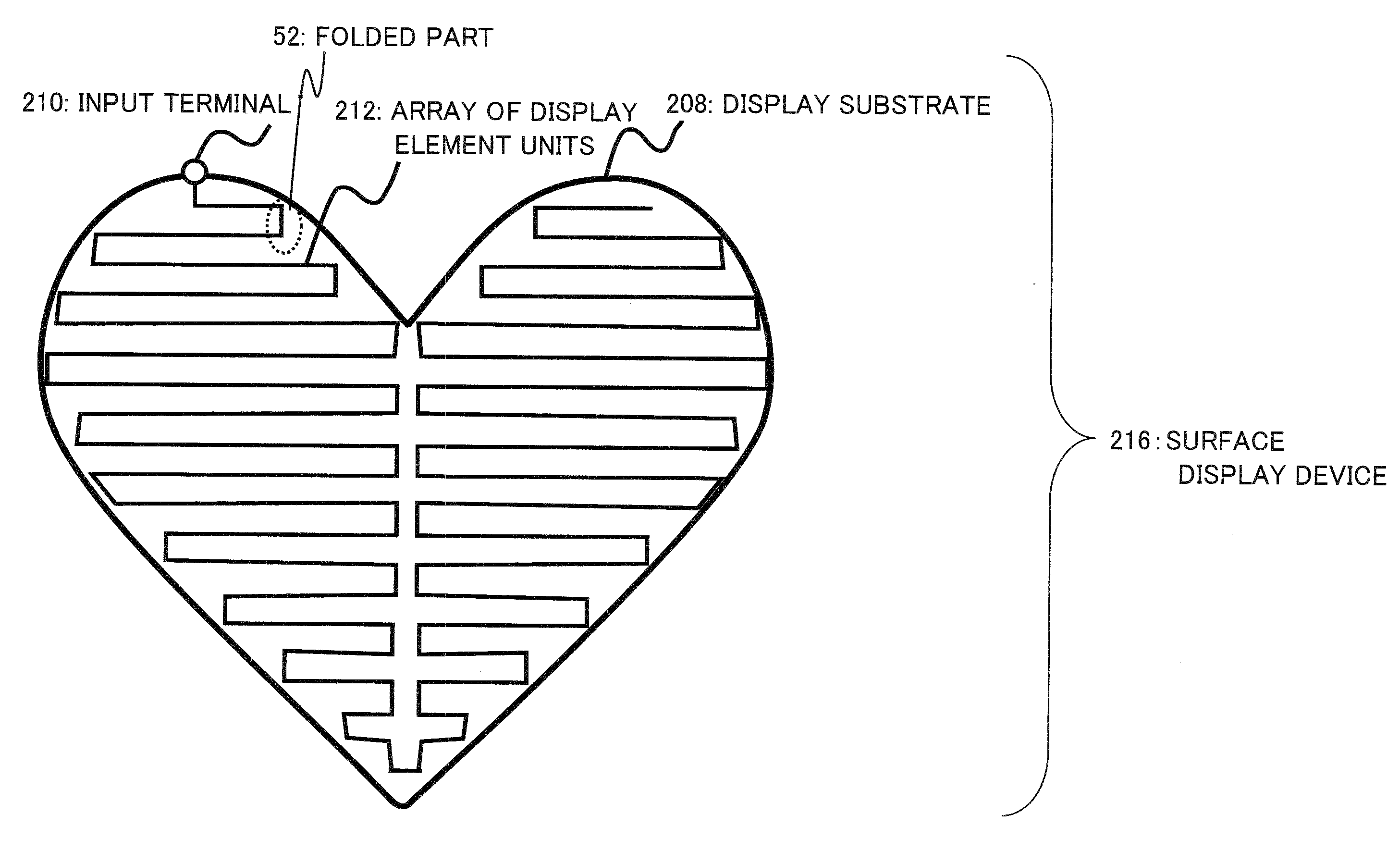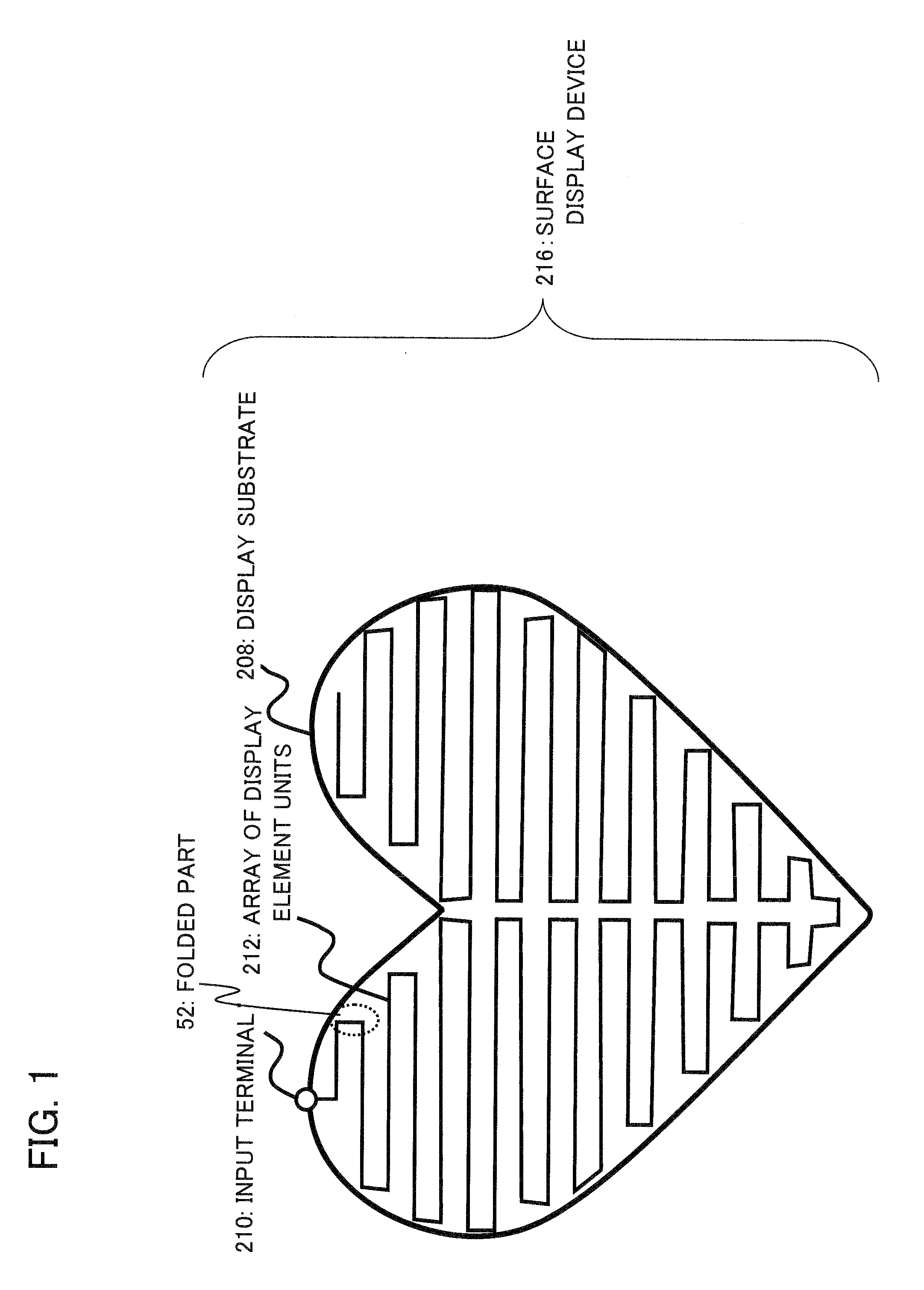Display device
a display device and surface technology, applied in static indicating devices, non-linear optics, instruments, etc., can solve the problems of limiting the degree of freedom of shape design, the conventional display device cannot afford an arbitrary shape, and placing limitations on the shape freedom of the display device, so as to reduce the number of connection terminals for connection with the circuit driving the display substrate, reduce the number of drivers, and reduce the effect of mask design tim
- Summary
- Abstract
- Description
- Claims
- Application Information
AI Technical Summary
Benefits of technology
Problems solved by technology
Method used
Image
Examples
example 1
[0153]In the present example, a TFT substrate (Thin Film Transistor) substrate is prepared, using the polysilicon process technique, and an active matrix liquid crystal display device was fabricated using this substrate. The sell-known low-temperature polysilicon TFT-LCD fabrication technique was used as fabrication process. The detailed process for fabrication is stated in “Illustrated Low-Temperature poly-Si TFT-LCD Fabrication Process, 2005-issue, published by E-Express Co. Ltd.
[0154]Using the technique for low-temperature fabrication of polysilicon TFT-LCD, a TFT pixel switch of a planar configuration, a TFT of a scanning circuit and an electrode of the storage capacitor, were prepared to form a TFT substrate.
[0155]The TFT that forms a circuit on a display substrate was prepared as a TFT of the same process. That is, the process is such as enables the operation of a TFT in need of a high voltage.
[0156]A patterned pillar of 4 μm was prepared on this TFT substrate for use as a spa...
example 2
[0180]In the case of the example 1 of FIGS. 11A and 11B, 21 transistors for each pixel and a two-phase clock signal, namely a clock signal for driving the scanning circuit and the inverted clock signal, are required.
[0181]The present example, which will now be described, has been devised by the present inventor to reduce the number of the transistors and the number of the clock signals.
[0182]FIG. 13 shows the configuration of the scanning circuit and the pixel circuit of the present example. In FIG. 13, a display device (200) is made up of a circuit (206), forming a stage of the scanning circuit, and a scanning circuit (202), connected to an output node of the circuit (206). This circuit (206), forming a stage of the scanning circuit, is made up of a sole inverter circuit and a sole switching transistor. Switching transistors 214a and 214c are of the n-type and switching transistors 214b and 214d are of the p-type. That is, the first-stage switching transistor 214a, second-stage swi...
example 3
[0206]An example 3 of the present invention will now be described. Referring to FIGS. 15A and 15B, the scanning circuit (204) of the present example includes a clocked inverter (56) per stage of the scanning circuit.
[0207]A sole pixel switch (350) is connected to output nodes n1, n2, n3, . . . of the circuit (206) that constitutes a stage of the scanning circuit. The pixel switch, connected to the output node 1, is of the p-type, that connected to the output node n2 is of the n-type and that connected to the output node n3 is of the p-type, and so forth. That is, the pixel switches connected to the odd and the even stages of the scanning circuit are of the p-type and the n-type, respectively.
[0208]Thus, a display device may be implemented using five transistors per pixel. The clock signal that drives the scanning circuit is CLK and its inversion XCLK.
[0209]The operation of the scanning circuit and the pixel circuit, constructed as described above, is now described. FIG. 16 depicts a...
PUM
 Login to View More
Login to View More Abstract
Description
Claims
Application Information
 Login to View More
Login to View More - R&D
- Intellectual Property
- Life Sciences
- Materials
- Tech Scout
- Unparalleled Data Quality
- Higher Quality Content
- 60% Fewer Hallucinations
Browse by: Latest US Patents, China's latest patents, Technical Efficacy Thesaurus, Application Domain, Technology Topic, Popular Technical Reports.
© 2025 PatSnap. All rights reserved.Legal|Privacy policy|Modern Slavery Act Transparency Statement|Sitemap|About US| Contact US: help@patsnap.com



